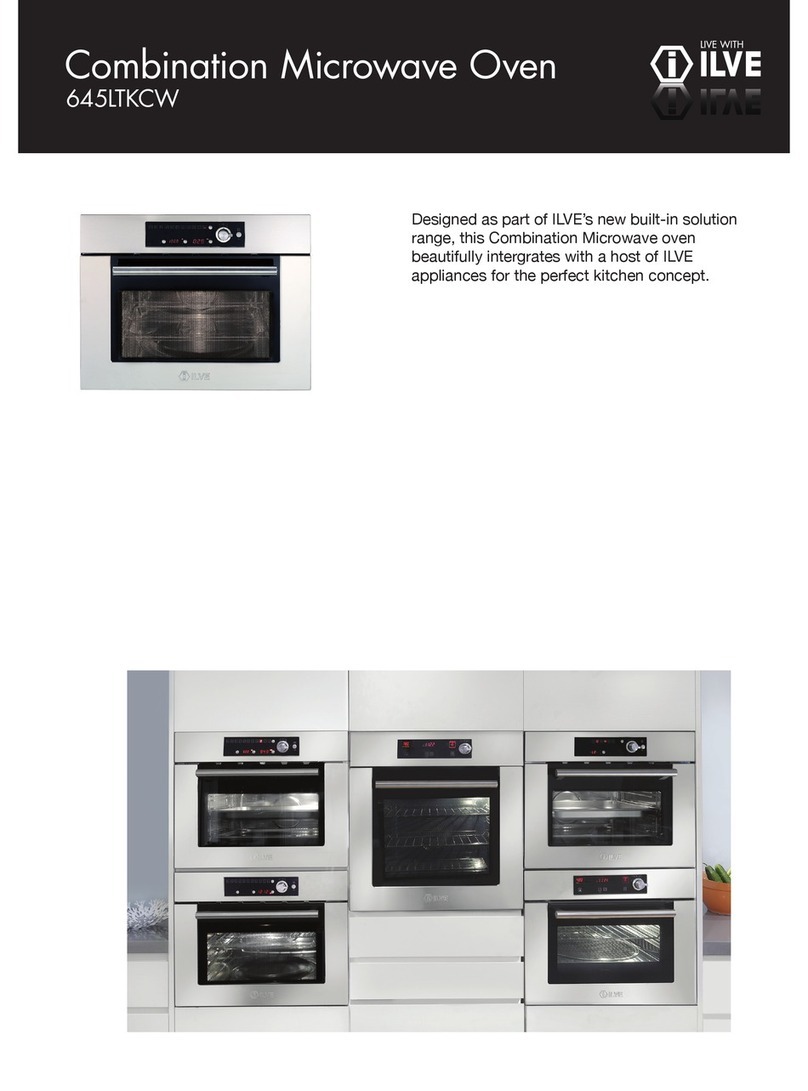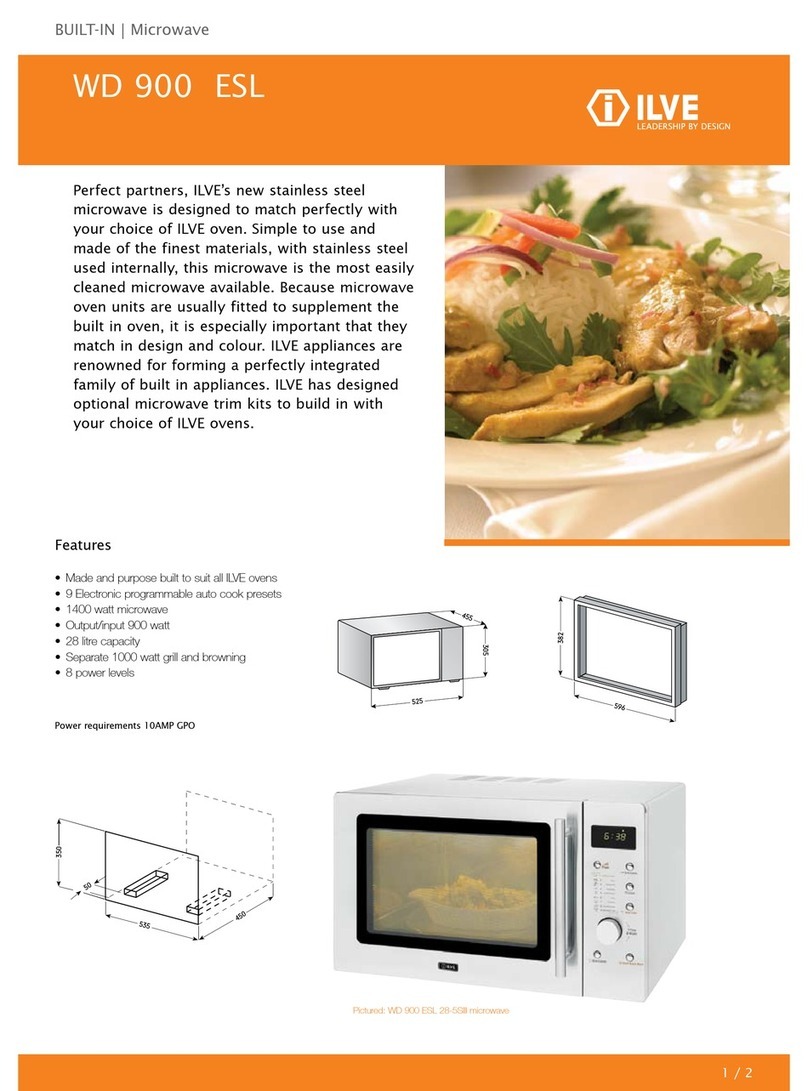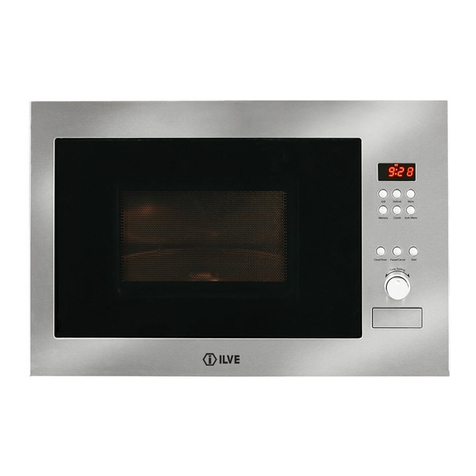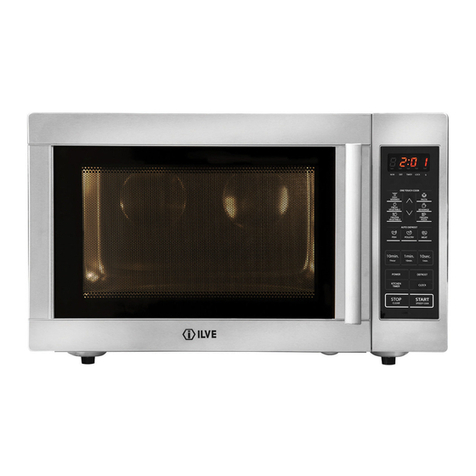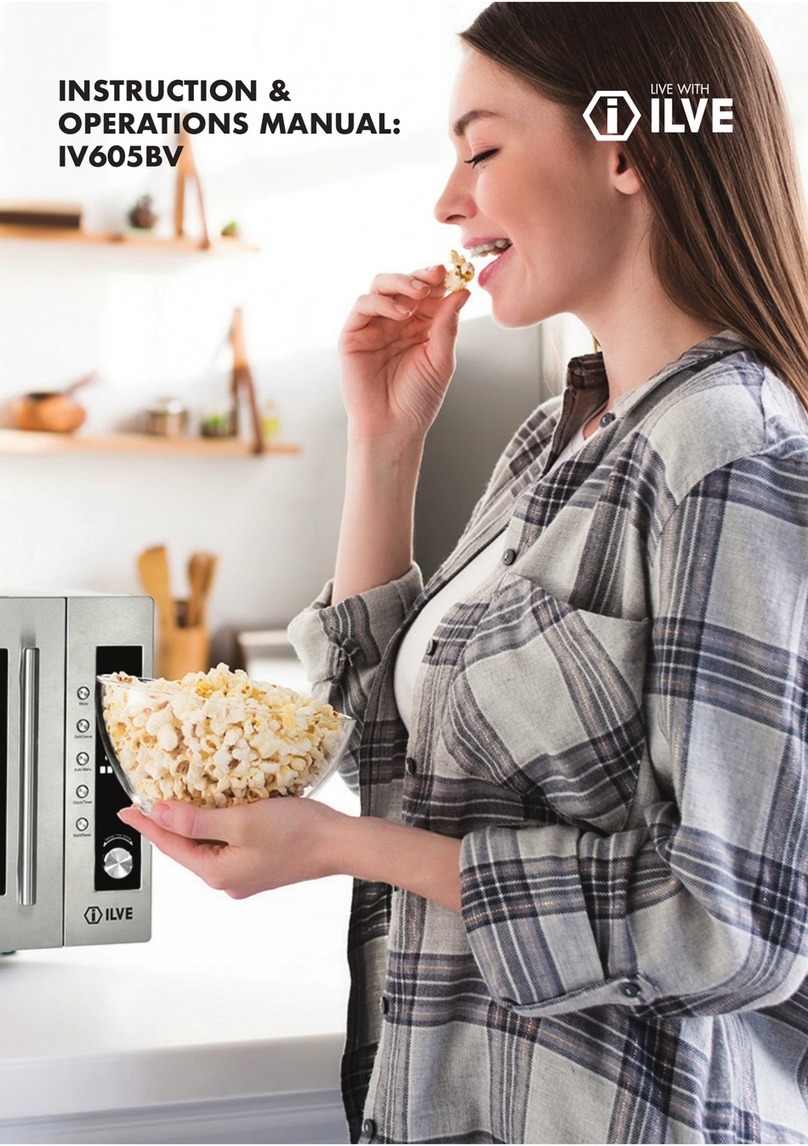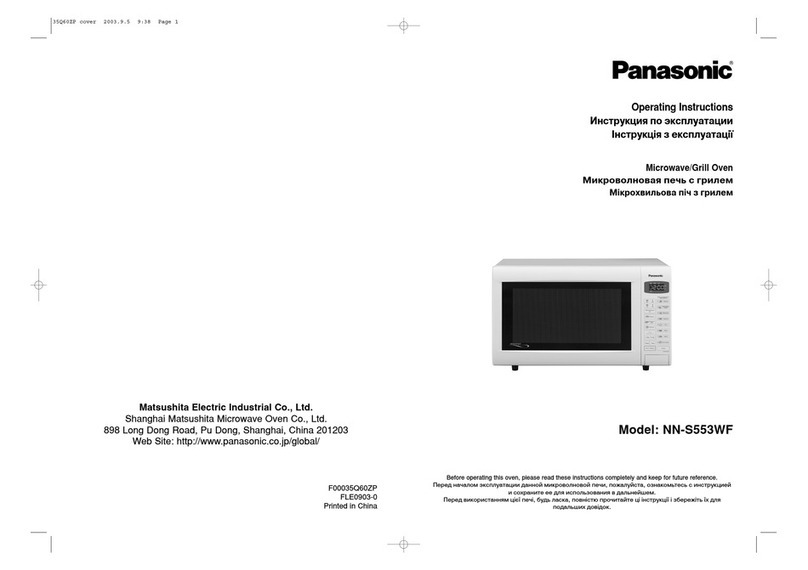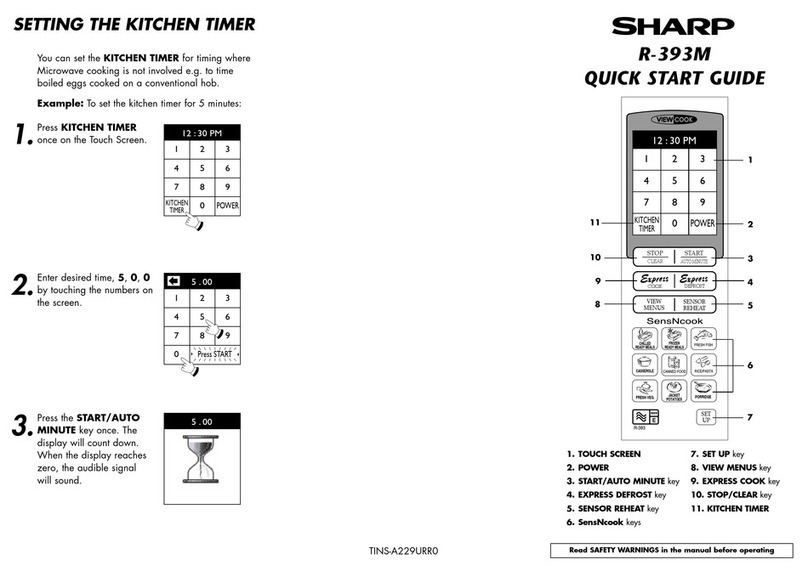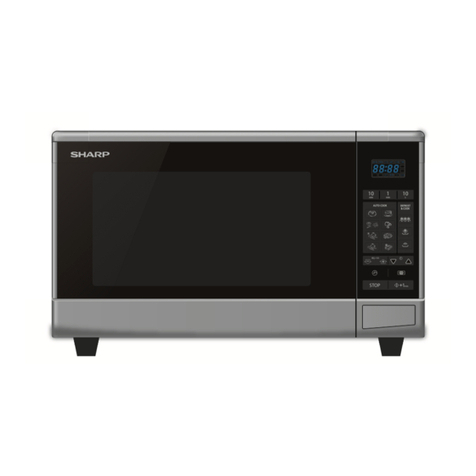
•The appliance is not to be used by persons (including children) with reduced physical, sensory or mental
capabilities, or lack of experience and knowledge, unless they have been given supervision or instruction.
Children being supervised not to play with the appliance.
• Warning: Accessible parts may become hot during use. Young children should be kept away.
• WARNING: If the door seals are damaged, the oven must not be operated until it has been repaired by
a trained person.
• WARNING: It is hazardous for anyone other than a trained person to carry out any service or repair operation
which involves the removal of any cover which gives protection against exposure to microwave energy.
• WARNING: Liquids or other foods must not be heated in sealed containers since they are liable to explode.
heaWhen ting liquids, milk, sauces etc. the boiling point of the liquid may be reached without the production
of typical bubbles.The liquid does not boil evenly throughout.This so-called ‘boiling delay’can cause a
sudden build-up of bubbles when the container is removed from the oven or shaken,which can lead to
the liquid boiling over suddenly and explosively and can cause skin burning.
• Only allow children to use the oven with supervision when adequate instructions have been given so
that the child is able to use the oven in a safe way and understands the hazards of improper use.
• When heating food in plastic or paper containers, keep an eye on the oven due to the possibility of
ignition. If smoke is observed, switch or unplug the appliance and keep the door closed in order to
sti any ames.
• Microwave heating of beverages can result in delayed eruptive boiling; therefore care must be taken
when handling the container.
• Failure to maintain the oven in a clean condition could lead to deterioration of the surface that could
adversely a ect the life of the appliance and possibly result in a hazardous situation. Improper use can
present a risk of both personal injury and material damage. To avoid the risk of accidents and damage
to the appliance please read these operating instructions carefully before installation and before using
it for the rst time. They contain important notes on installation, safety, operation and care of the
appliance. Keep these instructions in a safe place and pass them on to any future user.
• Do not use harsh abrasive cleaners or sharp metal scrapers to clean the oven door glass since they
can scratch the surface, which may result in shattering of the glass. A steam cleaner is not to be used.
• This appliance complies with all relevant local and national safety requirements.
• The appliance is intended for domestic use only: to cook, defrost, reheat food. Any other usage is not
supported by the manufacturer and could be dangerous. The manufacturer cannot be held liable for
damage caused by improper or incorrect use of the appliance. Never use the microwave tostore or dry
items which could ignite easily. Moisture evaporates and create a Fire hazard.
• T
• Appliance is intended to be used in household only.
Microwave oven is intended for heating food and beverages. Drying of food or clothing and heating of
Contents of feeding bottles and baby food jars shall be stirred or shaken and the temperature checked
before consumption, in order to avoid burns.
The appliance must not be installed behind a decorative door in order to avoid overheating.
his appliance is not a toy! To avoid the risk of injury, do not allow children to play on or near it or to
play with the controls.
Warning and Safety Instructions
6 ILVE Operating Manual


